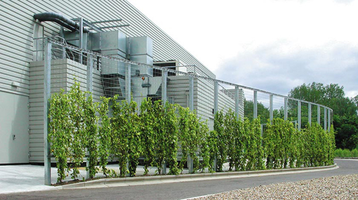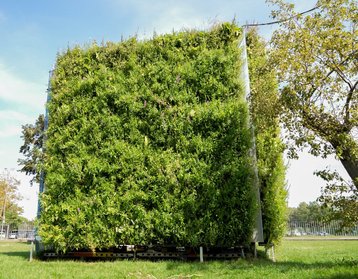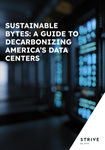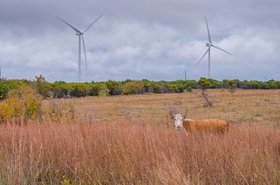Green walls are becoming a common feature on the facades of data centers in Europe. This is being driven by planning permission requirements, especially as data centers start in urban areas face greater scrutiny.
This is exemplified in the main FLAP cities (Frankfurt, London, Amsterdam, and Paris) where planning permissions are linked to meeting greening thresholds.
In Frankfurt, there is a planning requirement to green a significant percentage of the façade for data centers. In London, there are planning requirements requiring minimum Urban Greening Factor (percentage site greening requirements) and minimum Biodiversity Net Gain limits.
So, other than looking pretty and meeting local planning requirements, do they do anything else?
The answer is yes, but, they need to be specified and designed correctly. The key opportunities for living walls beyond pure aesthetics are increasing biodiversity, providing cooling, and increasing social value.
Biodiversity loss alongside climate change is one of the biggest challenges facing humanity. The Living Planet Report by the WWF in 2022 estimated we have seen an average decline of 69 percent in species populations since 1970.
On the back of this existential threat, a raft of new regulations were introduced in the UK this year, known as Biodiversity Net Gain, requiring all sites to increase site biodiversity by 10 percent based on pre-existing levels. A similar regulation is being prepared in the European Parliament. This is based on a Nature Recovery approach. Doing no harm is no longer acceptable, there also needs to be a regenerative approach.
So what can living walls do? This very much depends on the type.
The best option would be to work with ecologists to understand what types of plants would be best suited to supporting local nature recovery plans. Systems tailored to using local species such as native wildflowers are best suited to nature recovery.
Climbing systems and non-native species do provide habitat for biodiversity but often only contain a few different species, and do not provide the seasonal flowering and habitat complexity that is found in nature.
Cooling benefits of living walls depend partially on the type and scale of the cooling needs of data centers. There are opportunities for lowering the temperature of the area around the buildings which can provide a cooler envelope and offer energy savings.
There are several types of living walls out there. The most commonly used living wall type used in data centers is climber systems. There are also more intensive modular systems (either rainscreen or built-up systems) that vary in maintenance requirements from passive to more active.
Climber systems are typically the most cost-effective vertical greening solution. However, this depends slightly on whether they include multiple levels of planters and/or whether they have a separate structure for support. The maintenance obligations are typically very low though, reducing the OpEx costs compared to more intensive systems. The biggest drawback for climbing wall systems is their growth speed, they typically take between 5-10 years to really establish themselves and that further depends on how well they are looked after. Getting even growth is very difficult and takes a long time. This means that the biodiversity, cooling, and social value benefits for which they are often intended can be a long time coming.
Modular living wall systems come in two types, integrated rainscreen systems and built up systems.
Integrated rainscreen systems are based on standard metal rainscreen technology and panels are installed directly onto standard vertical cladding rails.
Built up systems are made of multiple layers including rails, cement board, membranes, additional rails, and planting modules.
The maintenance obligations depend on the choice of planting and system. Seeded living wall systems using wildflowers require less individual plant care and just require annual cuts.
Maintenance access for all systems is very important and should be considered at the concept stage. As they all provide near instantaneous greening any biodiversity, cooling, and social value benefits are greater and more predictable than climber systems.
Modular systems with wet substrates offer around three degrees Celsius reductions in air temperature between the living wall and the surrounding area (measured on a Vertical Meadow integrated rain screen living wall). This can help reduce the urban heat island effects of the buildings and have a greater impact than climber systems.
Given the scale of the urban heat island effect and the rising temperatures from climate change, that reduction is significant. If chillers can be placed close to the living walls then it could also provide significant energy savings by reducing local temperatures. More research is required.
Increasing social value is very important as data centers are often in urban centers where there are existing local communities. As data centers are often substantial in scale, integrating them better into the urban fabric is essential. This is a significant driver for the more stringent planning requirements.
Presenting a green wall exterior to the local community provides a human-scale intervention that provides visual amenities and is less imposing than the more typical metallic grey panel exteriors associated with warehousing and data centers. It is also a way of engaging the community through contact with nature and seasonal variation.






